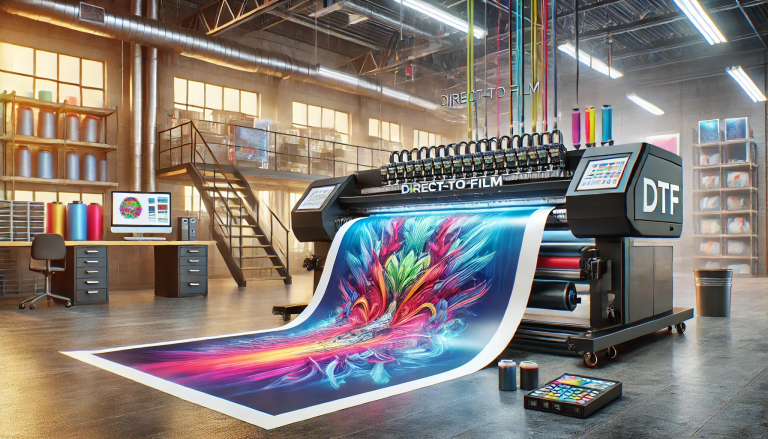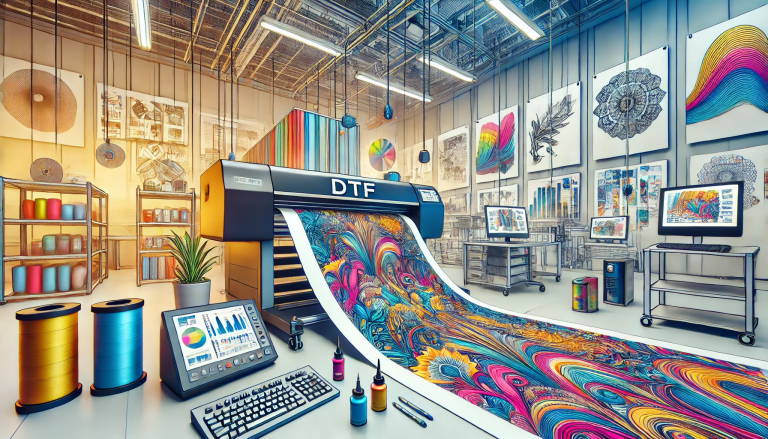“How to Use a UV Printer: A Beginner’s Guide” -MAXDTF- UV DTF Transfer AB Paper Supplier, Transfer DTF UV Film Factory, Made in China
UV (Ultraviolet) printers are a revolution in the printing industry. Unlike traditional inkjet printers that use solvent inks, UV printers use ultraviolet light to dry or cure ink as it’s printed. The result is a vivid, high-quality print that’s both durable and resistant to fading. Whether you’re a novice or a professional looking to diversify your printing techniques, this guide will walk you through the basics of using a UV printer.
1. Understand the Basics
What is UV printing? UV printing is a form of digital printing that uses ultraviolet lights to dry or cure ink instantly. This method allows for layering of ink, which results in a textured, 3D feel on certain prints.
2. Setting Up Your UV Printer
a. Choose the right location: Place the printer in a well-ventilated area, away from direct sunlight. Ensure it’s on a level surface and that there’s ample space around it for maintenance and operations.
b. Install the UV ink: Depending on your printer model, ink installation can vary. Refer to your user manual for specific instructions.
c. Power up: Once set up, turn the printer on. Allow it some time to initialize and recognize the ink cartridges.
3. Choose Your Material
One of the advantages of UV printing is its ability to print on a wide range of materials including:
- Plastics
- Glass
- Metals
- Ceramics
- Wood
- Paper
- Leather
Ensure the material’s surface is clean and free from dust or residues. Some materials might require pre-treatment to ensure proper ink adhesion.
4. Design & Software
- File Type: Most UV printers support popular file formats like JPG, TIFF, PNG, and more.
- Software: Your UV printer will come with its own RIP (Raster Image Processor) software, which helps in processing your design for printing. Familiarize yourself with its features.
- Resolution: A minimum of 300 dpi is recommended for high-quality prints.
5. Printing
a. Load your material: Depending on the printer’s design, there might be a flatbed where the material is placed or a feeding mechanism.
b. Adjust the print head: Ensure it’s at the right height above the material to avoid any collisions and to ensure optimum print quality.
c. Send your design to print: Using the RIP software, send your design to the printer.
d. UV Curing: As the material is printed on, UV lamps on the printer cure the ink immediately. This results in a durable, scratch-resistant finish.
6. Post-Printing & Maintenance
a. Inspect your print: Check for any inconsistencies or errors. Over time, you’ll get better at fine-tuning your prints.
b. Clean the print head: Regularly cleaning the print head ensures no ink clogs and maintains the print quality.
c. Turn off and store: If you’re not using the printer, turn it off. Cover it to protect it from dust.
7. Safety Tips
- Wear protective gloves when handling UV ink.
- Ensure good ventilation when the printer is in operation.
- Never look directly at the UV light source.
Conclusion
UV printers are a fantastic tool for both hobbyists and professionals, offering a world of possibilities with their versatility. By following the basics outlined in this guide, you’ll be on your way to producing stunning, high-quality prints in no time! Remember to always refer to the user manual of your specific UV printer model for the best results.





